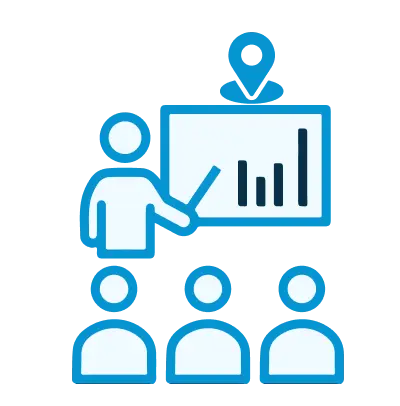The Oracle Access Management 12c: Administration Essentials course is an in-depth educational program designed for individuals seeking to understand and manage the Oracle Access Management suite. This course offers a comprehensive understanding of the Oracle Access Manager (OAM) 12c PS3, focusing on its Runtime architecture, key features, and integration capabilities. Through a series of modules, learners will gain hands-on experience with Installation and configuration, System configuration, and Policy configuration, enhancing their skills in securing applications.
Participants will also explore SSO and session management, applying best practices for seamless single sign-on experiences, and managing user sessions effectively. The course delves into Auditing and logging procedures, essential for maintaining compliance and monitoring system health. Troubleshooting techniques and management tools, such as Oracle Enterprise Manager Fusion Middleware Control and Access Tester, are covered to equip learners with the ability to resolve issues swiftly.
Moreover, the course addresses the use of OAM in Hybrid environments, demonstrating how it can be integrated with cloud services like Identity Cloud Service (IDCS) for modern authentication solutions. Upon completion, learners will have a robust understanding of Oracle Access Management, enabling them to implement and maintain secure access management systems effectively.

Purchase This Course
♱ Excluding VAT/GST
Classroom Training price is on request
You can request classroom training in any city on any date by Requesting More Information
♱ Excluding VAT/GST
Classroom Training price is on request
You can request classroom training in any city on any date by Requesting More Information

1-on-1 Training
Schedule personalized sessions based upon your availability.

Customized Training
Tailor your learning experience. Dive deeper in topics of greater interest to you.
Happiness Guaranteed
Experience exceptional training with the confidence of our Happiness Guarantee, ensuring your satisfaction or a full refund.

Destination Training
Learning without limits. Create custom courses that fit your exact needs, from blended topics to brand-new content.

Fly-Me-A-Trainer (FMAT)
Flexible on-site learning for larger groups. Fly an expert to your location anywhere in the world.
To ensure that participants are fully prepared to engage with the Oracle Access Management 12c: Administration Essentials course and gain the maximum benefit from its content, the following prerequisites are recommended:
These prerequisites are intended to provide a foundation that will help you comfortably grasp the course material and apply it effectively in real-world scenarios. If you are new to some of these areas, we encourage you to seek out introductory materials or consider preliminary courses to build a solid understanding before embarking on the Oracle Access Management 12c training.
The Oracle Access Management 12c course offers essential admin skills for secure access to critical apps and data.
The Oracle Access Management 12c: Administration Essentials course equips students with the expertise to install, configure, and manage the Oracle Access Manager for secure access and single sign-on.
Oracle Access Manager (OAM) 12c PS3 is a security software tool developed by Oracle. It primarily manages access to applications and services within an enterprise, ensuring that only authorized users can access specific sets of data and functionality. OAM achieves this through authentication and authorization procedures, thereby increasing the security of IT environments. Its feature set includes single sign-on capabilities, which streamline user interaction by eliminating the need to repeatedly log in to various applications, enhancing both user experience and organizational productivity. OAM plays a crucial role in simplifying identity management across diverse technological landscapes.
Runtime architecture refers to the organized structure of a system when it is executing on a computer. This architecture includes the software components that are active (like applications or processes) and the connections between them as they interact with each other and with the underlying hardware (such as CPU, memory, and external devices). Key aspects involve how software components communicate, manage resources, and handle data during operation, ensuring the system performs efficiently and reliably while executing tasks. This structure is crucial for maintaining system stability and optimizing performance during the runtime of any application or service.
Installation and configuration refer to the processes involved in setting up software or hardware for use. Installation is the initial step where the software is copied onto the computer's hard drive from another source, like a CD or a download. Configuration follows, which involves setting up the software or hardware according to specific requirements or preferences. This might include inputting user details, specifying system preferences, or integrating with other software like Oracle Access Manager 12c for secure access control. Proper installation and configuration ensure optimal functionality and performance of software systems or devices.
System configuration refers to the process of setting up the hardware and software parameters of computer systems to ensure they work effectively for specific tasks or under defined conditions. This involves establishing proper settings in the operating system, applications, and networks to optimize performance, compatibility, and security. The process requires a precise understanding of the system components and their relationships, plus careful consideration to adjust settings to meet particular user needs or organizational goals. Proper system configuration helps in efficient system operation, reduces potential security risks, and ensures that hardware and software function harmoniously.
Policy configuration involves setting rules and parameters that dictate how systems manage and enforce various policies, typically within software or a network. In the context of an identity management system like Oracle Access Manager 12c, policy configuration helps define and control who can access specific resources, when, and under what conditions. This ensures that only authenticated and authorized users can interact with critical applications and data, thereby increasing security and compliance with organizational standards and regulations. Essential aspects include setting user privileges, configuring security settings, and defining access control policies.
Auditing and logging are key security practices in managing information systems. Auditing involves tracking and recording user activities and system changes, ensuring that operations comply with established policies. Logging captures detailed information about events occurring within a system, such as user access and system errors, providing a historical record. Together, they play a crucial role in monitoring system health, diagnosing issues, improving security, and achieving compliance with regulations. These tools are essential, especially in environments using complex software such as Oracle Access Manager 12c, to protect sensitive information and maintain system integrity.
Hybrid environments blend on-premises infrastructure with cloud services to create a versatile IT ecosystem. This setup allows a company to keep sensitive data on private servers while using cloud-based resources for scaling operations, improving flexibility, and reducing costs. By leveraging both local and cloud advantages, organizations can optimize performance, enhance data security, and adapt quickly to changing needs. Hybrid environments are particularly valuable for businesses requiring strong data governance but also needing the agility offered by the cloud.
Oracle Enterprise Manager Fusion Middleware Control is a web-based management tool provided by Oracle to oversee and manage the various components of Oracle Fusion Middleware, such as Oracle WebLogic Server, SOA Suite, and Oracle Access Manager. It simplifies tasks like performance monitoring, application deployment, and configuration management. This tool offers a centralized interface that helps system administrators manage the middleware infrastructure effectively, enhance system stability, and respond rapidly to potential issues within the IT environment.
An Access Tester is a role or tool used in the realm of cybersecurity and IT to ensure that permissions and access controls within a system are correctly implemented and secured. They test systems to verify that only authorized users can access specific resources and that their rights are appropriately aligned with their roles. This process helps organizations protect sensitive data and comply with regulatory requirements. Access testers use a variety of techniques to mimic potential unauthorized access scenarios and ensure systems are resilient against such threats, thereby maintaining the integrity and security of the information.
The Oracle Access Management 12c course offers essential admin skills for secure access to critical apps and data.
The Oracle Access Management 12c: Administration Essentials course equips students with the expertise to install, configure, and manage the Oracle Access Manager for secure access and single sign-on.

